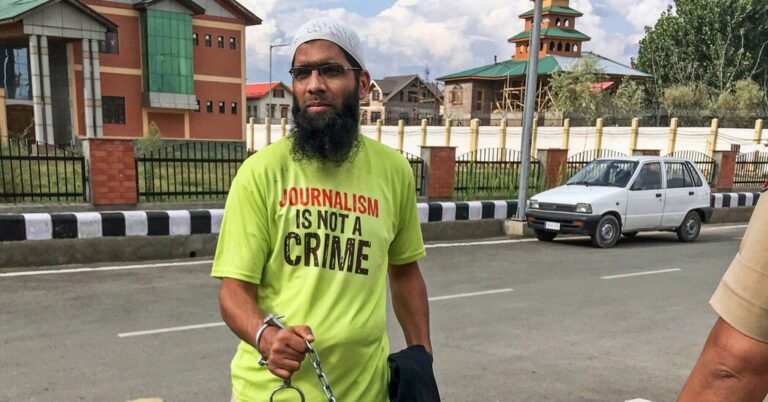Typhoon Mawar Lashes Guam With High Winds, Knocking Out Power
Typhoon Mawar brought hurricane-force winds as it brushed over Guam on Wednesday, snapping trees, raising fears of flash flooding and leaving most of the American territory without power.
The storm, packing the force of a Category 4 hurricane, was the strongest to hammer the Pacific island in years and could intensify further on Wednesday evening, forecasters warned. The Guam Power Authority said that the island’s energy grid was providing power to only about 1,000 of its roughly 52,000 customers on Wednesday afternoon, and that it was too dangerous for repair crews to venture outside.
There were no immediate reports of injuries. But the storm was so strong that it broke the radar equipment that sends meteorological data to the local National Weather Service office — and brought the largest tree outside the building crashing down in the driveway.
The 150,000 or so people who live on Guam, an island nearly the size of Chicago that sits about 1,500 miles east of the Philippines, are used to tropical cyclones. The last big one, Super Typhoon Pongsona, came ashore in 2002 with the force of a Category 4 hurricane and caused more than $700 million in damage.
Stronger building codes and other advances have minimized damage and deaths from major storms on Guam in recent years. In most cases, “We just barbecue, chill, adapt” when a tropical cyclone blows through, said Wayne Chargualaf, 45, who works at the local government’s housing authority.
But because it has been so long since Pongsona, “We have an entire generation that has never experienced this,” he added. “So a little bit of doubt started to creep into my mind. Are we really ready for this?”
The center of Mawar appeared to be curling westward over the northern part of Guam early Wednesday evening, said Brandon Bukunt, a Weather Service meteorologist in Guam. Even though the storm was unlikely to officially make landfall, he added, its dangerous southern eyewall was moving over the central and northern part of the island.
“The center does not need to make landfall to get catastrophic or really impactful scenarios,” Mr. Bukunt said by phone, after the Weather Service issued a rare “extreme wind warning” for the northern part of Guam on Wednesday evening. Guam is 14 hours ahead of Eastern time.
The storm’s slow pace, about three m.p.h., raised the prospect of significant rainfall and flooding. A flash flood warning was in effect until early Thursday morning, and the Weather Service said in an update that it expected up to 25 inches of rain to fall in some areas.
President Biden declared an emergency for Guam on Tuesday, allowing federal agencies to assist with relief efforts. Local officials also issued evacuation orders and halted commercial aviation.
The storm was also affecting the United States military, which has a number of major facilities on the island. All military aircraft there either left the island before the storm or were placed in protective hangars, Lt. Cmdr. Katie Koenig of the United States Navy said in a statement on Wednesday. All military ships left as well, except for a vessel that stayed in port with an engine problem, she said.
Tropical cyclones are called typhoons or hurricanes depending on where they originate. Typhoons, which tend to form from May to October, are tropical cyclones that develop in the northwestern Pacific and affect Asia. Studies say that climate change has increased the intensity of such storms, and the potential for destruction, because a warmer ocean provides more of the energy that fuels them.
Mawar, a Malaysian name that means “rose,” is the second named storm in the Western Pacific this season. The first, Tropical Storm Sanvu, weakened in less than two days.
Mawar was expected to move toward the Philippines over the next few days, but not before leaving a path of destruction across Guam.
Carlo Sgembelluri Pangelinan, 42, who sells container homes in a store in Barrigada Heights, a hilly, affluent neighborhood near Guam’s international airport, said he doubted the storm would be worse than anything he had lived through.
Still, he added, he worried about people who did not have adequate shelter, and animals without owners to care for them.
The island’s population is predominantly Catholic, and the Roman Catholic church in Guam said in a message to its congregants on Wednesday that the fear and anxiety permeating the island was understandable, in part because Super Typhoon Pongsona had left an “indelible impression” that could still be felt more than 20 years later.
“There is good that can be found amid storms,” the message said. “The kindness and care of people that emerge during such trials is one of them.”
John Yoon, Victoria Kim, McKenna Oxenden and Jin Yu Young contributed reporting.
Check out our Latest News and Follow us at Facebook
Original Source







